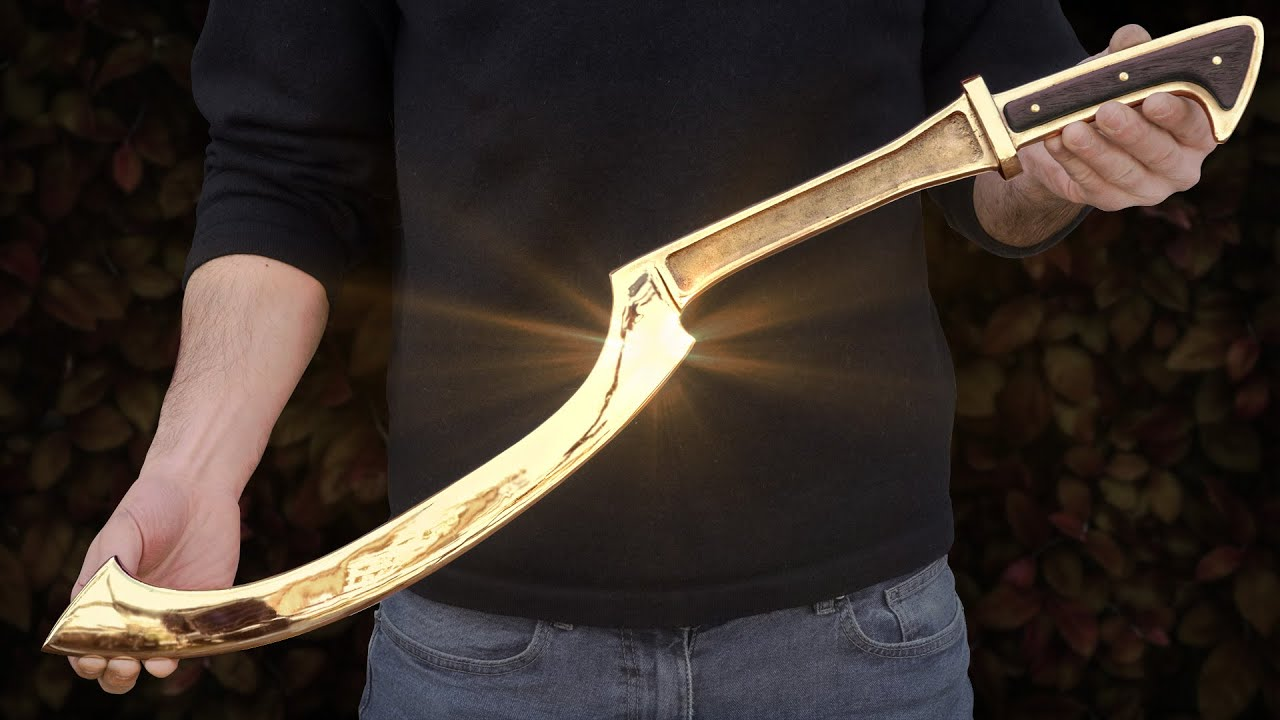During the late Bronze Age and early Iron Age, the Egyptians made use of a sword known as the khopesh. This sword had a characteristically curved blade and was designed to be used for both slicing and thrusting. It was a devastating weapon in its day, but as more contemporary weaponry became more cost-effective, it progressively lost ground to the competition and fell out of favor. The ancient Egyptians were the ones who developed and popularized it; it most likely originated in the Middle Kingdom, and the metalworkers and blacksmiths of the time period were the ones who created it. Although its beginnings are shrouded in mystery, historians estimate that they date back to about 2055 and 1650 BCE.
The khopesh, in particular, was often fashioned of bronze because of its longevity and hardness and was a common material for the production of weapons and equipment in ancient Egypt. Nevertheless, khopeshes made of iron and steel have also been discovered, which lends credence to the theory that the weapon evolved to take advantage of newly developed technology as it became accessible.
The grip on the khopesh was typically made of leather or another material overlaid over a handle made of wood. The handle of the khopesh was typically made of wood. The pommel, also known as the end of the handle, could take on a number of different forms, and some examples of khopeshes had a butt that was either rounded or flattened at the very end of the handle.
The blade of the khopesh was made razor-sharp by utilizing a number of different sharpening methods, such as grinding, honing, and polishing. On a stone, the edge of the blade would be sharpened using grits that were progressively finer in order to reach the desired result. Some khopeshes were also manufactured with teeth or serrations around the edge, which significantly increased their capacity for cutting.
Even while there is no evidence to imply that khopeshes were handed down in families, it is possible that individual soldiers may have valued their weapons and brought them into battle more than once. In addition, as time went on and the khopesh became less practical and more of a ceremonial or symbolic object, it is possible that it was passed down as a family treasure or displayed as a symbol of the prestige of a family or clan.
It is unknown if the khopeshes were buried with their owners or were placed in the tombs as symbolic or ceremonial objects. Khopeshes have been discovered in a number of ancient Egyptian tombs, notably the tomb of Tutankhamun (commonly known as King Tut). The khopeshes found in tombs and other archaeological sites have offered important new information about the ancient Egyptian military and their weapons and strategies.
The ancient Egyptians designed the khopesh, a type of sword, to protect themselves against human adversaries, crocodiles, and hippopotamuses. The oldest known specimens of the design date back to the Third Dynasty of Egypt, when it had only one sharpened edge and one flat side. It was more common among foot soldiers in standing armies than among riders on chariots, and its curved blade made it unsuitable for use in horse-drawn chariots. In Egypt, the late Bronze Age and early Iron Age saw the development and widespread use of the skiver, which made it easier to slice with and increased its effective range. The khopesh was generally regarded as a potent symbol of ancient Egypt’s military prowess, though its origins and effectiveness against different enemies are obscure. It is an intriguing historical relic, even if it is no longer used in modern warfare.

